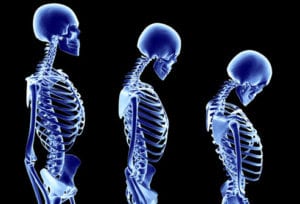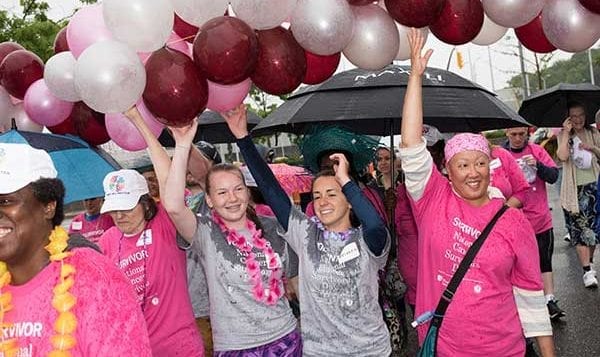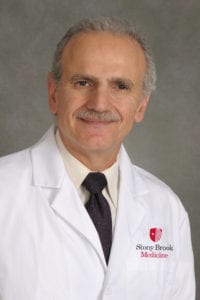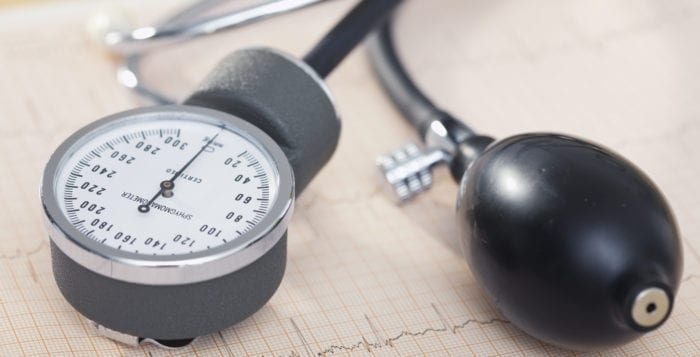Men as well as women are at risk
By David Dunaief, M.D.

Osteoporosis is a very tricky disease. What do osteoporosis, high blood pressure and high cholesterol have in common? They are all asymptomatic until the later stages. You can’t directly measure the progression or risk of osteoporosis fractures; you can only make an educated guess. The medical community does this mainly by using the Fracture Risk Assessment Tool (FRAX) score (1). FRAX estimates the 10-year risk of fracture in an untreated patient. You can find this tool at www.shef.ac.uk/FRAX.
There are a number of risks including genetics — family history, advanced age and demographics, with Asians being at highest risk — lifestyle, medications such as steroids and chronic diseases. A specific chronic disease that has come into focus relatively recently is heart disease. We will discuss this in more detail. Also, it does not seem that diabetes, neither type 1 nor type 2, contributes to osteoporosis (2).
When we think of osteoporosis, we tend to associate it predominately with postmenopausal women; however, it does affect a significant number of men.

Treatments range from lifestyle modifications including diet, exercise and smoking cessation to supplements and medications. The medications that are considered first-line therapy are bisphosphonates, such as Reclast or Zometa (zoledronic acid), Fosamax (alendronate), Actonel (risedronate), Boniva (ibandronate) and Didronel (etidronate).
While all of these drugs have reduced fractures, zoledronic acid has shown disappointing results in reducing fracture risk in the elderly population.
The relatively new medication on the block is Prolia (denosumab), an injectable human monoclonal antibody that works through a different mechanism of action, though the result is the same; it blocks the osteoclastic (breakdown) activity of the bone (3). It has been shown to increase bone mineral density, or thickening of the bone, and reduce fracture risk. Prolia was approved at the end of 2012, so it has not been on the market nearly as long as the bisphosphonates. However, like bisphosphonates, it does have side effects.
As far as supplements go, exciting news is that melatonin may help to increase bone mineral density. Let’s look at the research.
The forgotten sex: men
Rarely are men the forgotten sex when it comes to medical research, but osteoporosis is an exception. Approximately one-third of fractures occur in men, resulting in a 37 percent mortality rate. One in five men over the age of 50 will experience a fracture with osteoporosis as a contributing factor. The predictions are that these rates will climb precipitously and that men need to be treated appropriately (4). Currently, less than 50 percent of men with osteoporosis are receiving treatment (5).
Is bariatric surgery useful?
Though bariatric surgery has been shown to have a number of benefits for many chronic diseases, osteoporosis is not one of them. In the Swedish Obesity Study, results show that women who underwent bariatric surgery were at 50 percent increased risk of fractures as well as long-term osteoporosis (6). The results in men were not statistically significant. The duration of the study was 25 years. The authors hypothesize that malnutrition may play a role in causing this effect. Supplementation may be important to overcome this, as well as frequent follow-ups with blood tests to track micronutrient levels.
Heart disease, really?
When we think of heart disease, we associate it with lots of complications, but osteoporosis is not typically one of them. Well, think again. In the Hertfordshire Cohort Study, results show that there was a significantly increased risk of wrist fracture of the radius in those with heart disease (7). These results were shown overall. However, when the sexes were analyzed separately, this effect held true for men but was not true for women, although the results in women did trend toward significance. This may be an example where men are at greater risk than women. Therefore, it may be important to think about osteoporosis when someone is diagnosed with heart disease, especially since it is not intuitive. Lifestyle factors could be a contributor to this association, as well as estrogen deficiency.
A bisphosphonate that disappointed
Bisphosphonates are the mainstay of treatment for osteoporosis, increasing bone density and decreasing fracture risk. However, zoledronic acid had surprisingly disappointing results in a randomized controlled trial (RCT) (8). Results showed that while zoledronic acid increased bone density over two years, it did not decrease the risk of fracture in elderly women in nursing homes. This does not necessarily have broad implications for other bisphosphonates. There were also weaknesses in this trial, the most serious being that fracture risk was not a primary end point. Additionally, the study may have been too small. However, this still is a very intriguing study.
Melatonin for osteoporosis
What could melatonin possibly have to do with osteoporosis? There are surprisingly positive results with melatonin. In a very small RCT, melatonin in combination with 800 mg/day of vitamin D3 and 800 mg/day of calcium increased bone density significantly in the spine and femoral neck over a one-year period, compared to the control, or placebo, arm containing vitamin D3 and calcium of similar dosage (9).
Interestingly, with melatonin the amount of calcium excreted through the urine in a 24-hour measurement decreased by 12.2 percent. There was a dose-related curve, where melatonin 3 mg/day in combination with vitamin D3 and calcium showed greater results than 1 mg/day of melatonin, which showed significant results over the control arm.
This was a preliminary study involving 81 postmenopausal women divided into three groups. Fracture risk reduction was not an end point. Larger studies with fracture risk as a primary end point are needed. Having said this, these results are exciting. A caveat: If you’re going to use calcium 800 mg/day, it’s best if you split the dose into 400 mg twice a day; the body does not typically absorb more than 500 mg of calcium at one time.
Though medications such as bisphosphonates and a monoclonal antibody may have an important place in the treatment of osteoporosis, not all medications may be equal. It is important to treat with lifestyle modifications including potentially supplements — melatonin, calcium and vitamin D3 — as well as diet, exercise and overall behavior modifications. Heart disease’s unexpected association with osteoporosis is a good reason to treat the whole patient, not just the disease. And don’t forget that men may have this disease too!
References: (1) uptodate.com. (2) Exp Clin Endocrinol Diabetes. 2001;109 Suppl 2:S493-514. (3) epocrates.com. (4) iofbonehealth.org. (5) J Bone Miner Res. 2014;29:1929-1937. (6) ECO 2015. Abstract T8:OS3.3. (7) Osteoporos Int. 2015;26(7):1893-1901. (8) JAMA Intern Med. Online April 13, 2015. (9) J Pineal Res. Online June 3, 2015.
Dr. Dunaief is a speaker, author and local lifestyle medicine physician focusing on the integration of medicine, nutrition, fitness and stress management. For further information, visit www.medicalcompassmd.com or consult your personal physician.






 “My dog ate three grapes (or raisins). Should I be worried?” We get a phone call like this at least once every week to every other week. That’s a good question because we, as a veterinary community, are still looking for the exact answer. Let’s take a closer look at grape and raisin toxicity to see if we can shed some light on what we do know about this nebulous topic.
“My dog ate three grapes (or raisins). Should I be worried?” We get a phone call like this at least once every week to every other week. That’s a good question because we, as a veterinary community, are still looking for the exact answer. Let’s take a closer look at grape and raisin toxicity to see if we can shed some light on what we do know about this nebulous topic. Additional theories do not implicate anything in the grape itself, but rather the growth of certain fungi on the grape and toxins produced called aflatoxins, or pesticides sprayed on grapes. More recent evidence points toward something in the meaty portion of the grape or raisin because veterinary toxicologists found that raisins that have been cooked (in cookies, breads, cakes, etc.) are less toxic than grapes or uncooked raisins.
Additional theories do not implicate anything in the grape itself, but rather the growth of certain fungi on the grape and toxins produced called aflatoxins, or pesticides sprayed on grapes. More recent evidence points toward something in the meaty portion of the grape or raisin because veterinary toxicologists found that raisins that have been cooked (in cookies, breads, cakes, etc.) are less toxic than grapes or uncooked raisins.













